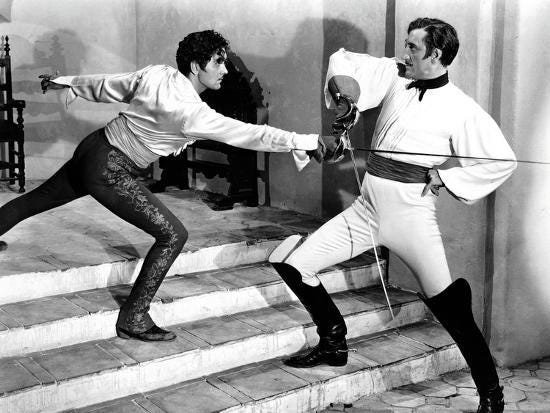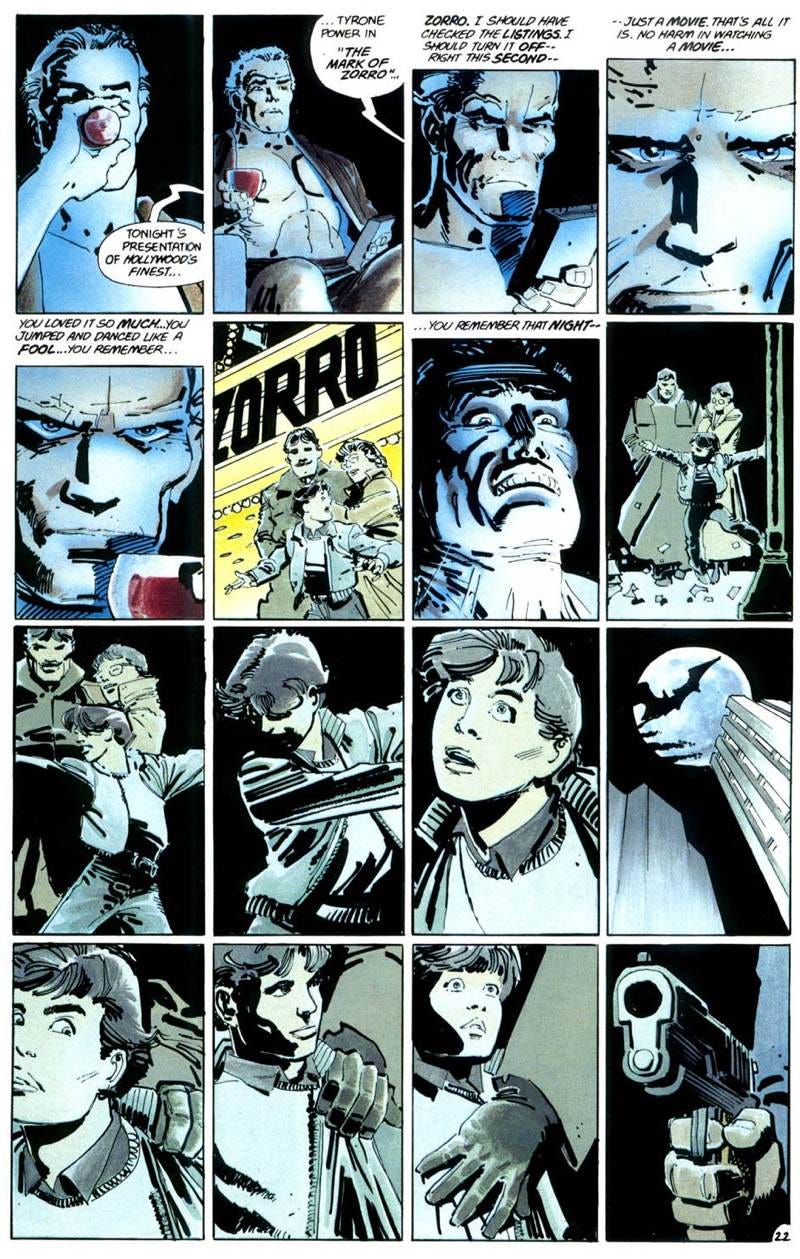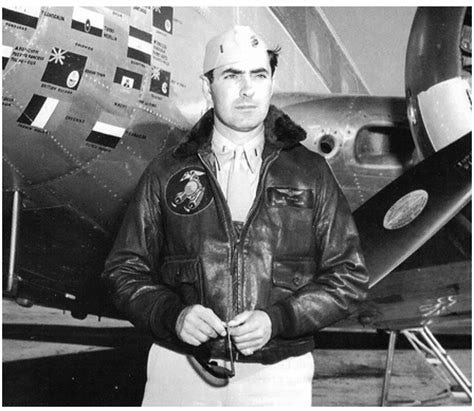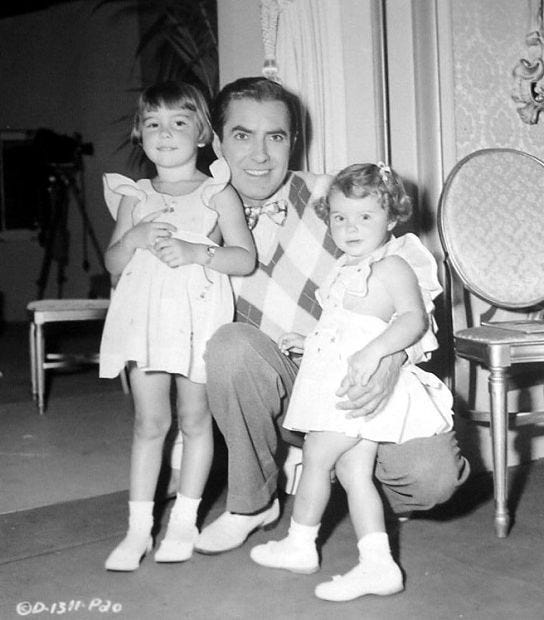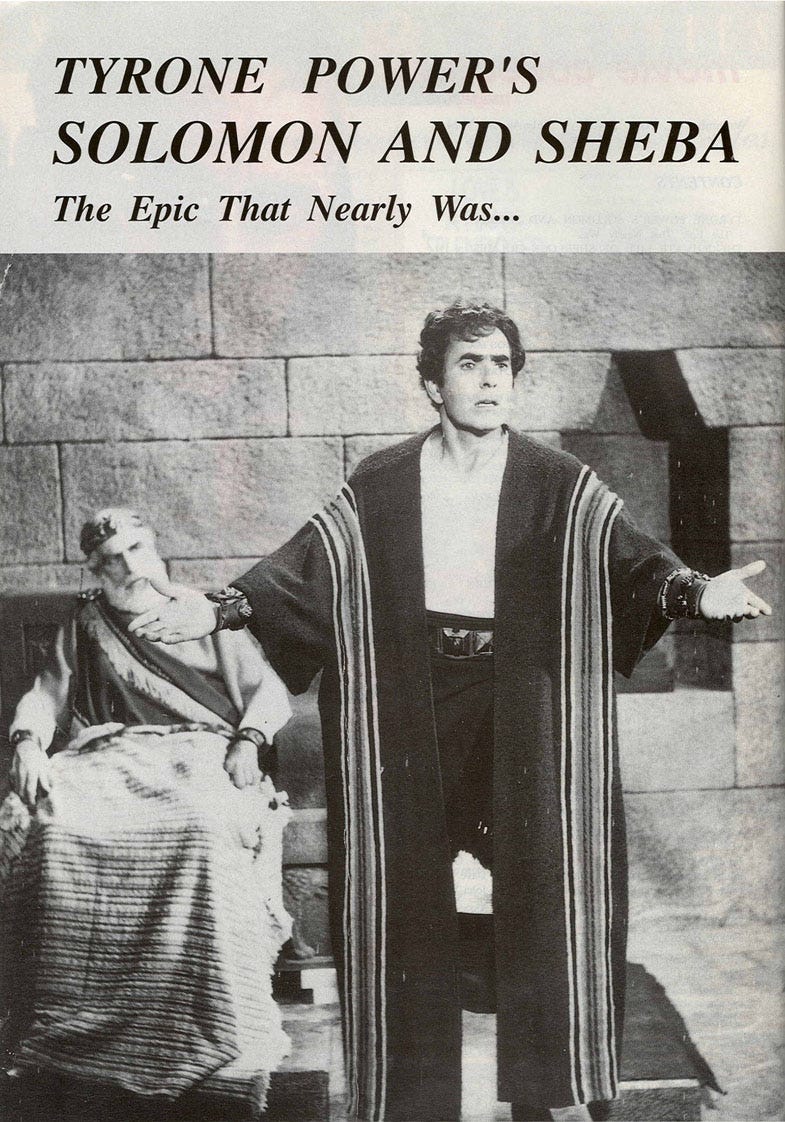Tyrone Power was a charismatic American actor who, during the mid-20th century, became one of the most prominent leading men of Hollywood’s Golden Age. Known for his dashing good looks and magnetic screen presence, Power starred in a variety of films, from swashbuckling adventures to hard-hitting dramas.
If you aren’t subscribed yet, hit the subscribe button below to receive the Adorable Stories every weekend, directly in your inbox:
Born on May 5, 1914 in Cincinnati, Ohio, to a distinguished family of stage actors, Tyrone Edmund Power III was quite literally born into the limelight.
His father, Tyrone Power Sr., was an English born renowned Shakespearean actor, while his mother, Patia, was also connected to the theatre. Tragically, his father passed away on December 23, 1931, when Tyrone was just a young boy, but the echo of his father’s performances resonated deeply within him, sparking a love for acting that would follow him throughout his life.
Tyrone Power’s family tree boasted remarkable connections within the arts. His paternal great-grandmother, Anne Gilbert, was a relative of the legendary Shakesperean actor, and Academy Award winner, Laurence Olivier.
Additionally, through his paternal grandmother, the stage actress Ethel Lavenu, he was connected by marriage to famed British author Evelyn Waugh, of Brideshead Revisited fame.
Power’s early years were steeped in the rich tradition of the theater. As a child, he would often find himself fascinated by the characters his father had played. Despite the tragedy of losing his father at a young age, this exposure to the world of acting set the stage for his future career.
He attended Purcell High School in Cincinnati, and later the Cincinnati Conservatory of Music, developing his craft and shaping his raw talent into the commanding presence that would later captivate Hollywood and the world.
Young Tyrone Power, following in his father’s theatrical footsteps, began his acting journey on stage. His early career was marked by roles in several plays, including a notable performance in “Romeo and Juliet.”
In 1936, Power made his way to Hollywood where he signed with 20th Century Fox and made his first significant silver screen appearance in “Lloyd’s of London” (1936): His portrayal of the lead character was met with acclaim, catapulting him into the limelight almost overnight.
The Mark of Zorro
“The Mark of Zorro” is a classic swashbuckling adventure film released in 1940 by 20th Century Fox. It was directed by Rouben Mamoulian and starred Tyrone Power in the lead role.
Tyrone Power’s portrayal of the masked hero was one of the greatest hits of the 40s and set a standard for the character that many subsequent adaptations have tried to emulate. The movie is also known for its exciting fencing sequences, especially the climactic duel between Zorro and Captain Pasquale.
“He could fence Errol Flynn into a cocked hat.”
— Basil Rathbone
The movie’s legacy echoes today in the (quite surprising) connection between “The Mark of Zorro” and “Batman”: in the DC Comics universe it is established that The Mark of Zorro was the film which the young Bruce Wayne had seen with his parents at the cinema, moments before they were killed in front of his eyes by an armed thug.
In the comics, Zorro is often portrayed as Bruce’s childhood hero and an influence on his Batman persona. In “The Dark Knight Returns” comic book it is claimed specifically that it was the Tyrone Power version (whereas a story by Alan Grant claimed it to be the silent Douglas Fairbanks original).
Cinema Career
Tyrone was a versatile actor and, as his career progressed, he continued to explore a wide variety of film genres, demonstrating his wide artistic range. Here are a few examples:
Film Noir: In “Nightmare Alley” (1947), Power takes on a darker role as a manipulative carnival hustler, a departure from his earlier heroic and romantic roles.
Historical Drama: In “Prince of Foxes” (1949), Power portrays a cunning Renaissance-era soldier.
Adventure: Power returns to the swashbuckling genre in “The Black Rose” (1950), set in the time of the Crusades.
War: He explores the war genre in “The Sun Also Rises” (1957), a World War I-era film based on Ernest Hemingway’s novel.
Legal Drama: In “Witness for the Prosecution” (1957), Power delivers a strong performance as a man accused of murder, standing trial in a tense courtroom drama.
WW2
In August 1942, Power enlisted in the United States Marine Corps. He attended boot camp at Marine Corps Recruit Depot San Diego and then underwent aviator training in Texas.
Upon completion of his training, Power was commissioned as a Second Lieutenant. He served as a transport pilot in the Pacific theater, often flying supplies between bases. He also took part in transporting wounded soldiers back to the U.S.
Power was part of many significant operations during the war, including the Battle of Iwo Jima and the Battle of Okinawa. By the end of the war, he had achieved the rank of First Lieutenant. He remained part of the reserves after the war and eventually reached the rank of Captain.
Personal Life
Tyrone Power met the French actress Annabella (born Suzanne Georgette Charpentier) while filming “Suez” in 1938. Their relationship blossomed quickly, leading to their marriage in 1939. Annabella, already a star in Europe, had made her American film debut just a few years earlier.
Darryl F. Zanuck, the head of 20th Century Fox during Tyrone Power’s tenure at the studio, was reportedly against Power’s marriage to Annabella. He feared that Power’s image as a bachelor and heartthrob, which was a significant contributor to his popularity, would be damaged by the marriage. This concern was not unique to Power; during Hollywood's Golden Age, studios often sought to control their stars’ personal lives to protect their marketable images.
Furthermore, during Power’s marriage to Annabella, Zanuck offered her roles in movies that were not commensurate with her talent. Some have suggested that this was done to keep her in the background and maintain Power’s star status. This (together with their inability to conceive) reportedly led to some strain in Power and Annabella's relationship.
Despite Zanuck’s involvement, Power and Annabella remained married for nearly a decade. Their relationship was marked by mutual respect and admiration, and they remained friends and maintained a close friendship even after their divorce.
Power’s second wife was Linda Christian (born Blanca Rosa Welter), a Mexican actress. Linda originally met Tyrone Power while he was filming “Captain from Castile” in Mexico in 1946. However, their romance didn’t blossom until a few years later. After Power’s divorce from Annabella, he and Christian reconnected and their relationship progressed quickly.
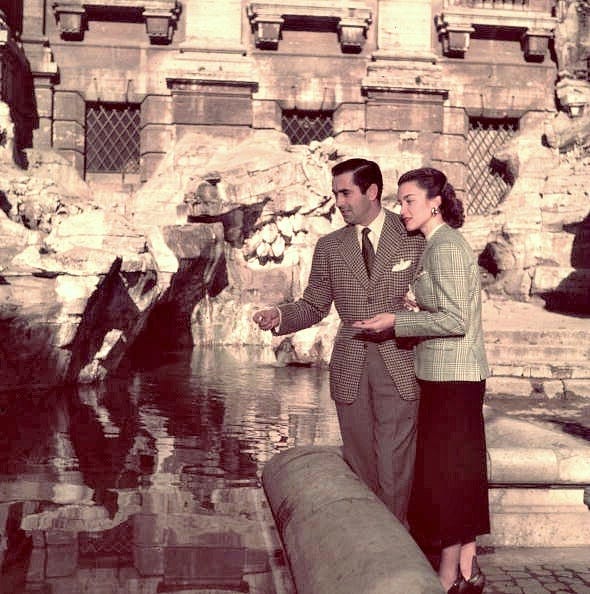
Their lavish wedding in Rome in 1949 was referred to as “the marriage of the century” by the media. The couple had two daughters together, Romina Power and Taryn Power, both of whom went on to have their own acting careers.
Linda and Tyrone divorced in 1956.
Tyrone Power’s third and final marriage was to Deborah Jean Smith, a film actress: they were married on May 7, 1958.
The couple had a son, Tyrone Power Jr., who was born on January 22, 1959.
Solomon and Sheba
“Solomon and Sheba” is a 1959 American epic historical romance film directed by King Vidor, renowned for being the final film appearance of Tyrone Power.
Power was cast in the lead role as King Solomon of Israel, co-starring Gina Lollobrigida.
The film tells the biblical story of Israel’s King Solomon, his love for the Queen of Sheba, and their struggle with his brother Adonijah for the control of the Kingdom of Israel. The movie is known for its grand scale, lavish set designs, and dramatic story.
Tyrone Power had filmed a significant portion of his scenes when he collapsed during a dueling scene with his co-star, George Sanders. This event was a massive shock to the film industry and fans worldwide.
The film was nearly scrapped, but it was decided to reshoot Power’s scenes with actor Yul Brynner stepping in to play Solomon. However, if you look closely, you can still see Power in some long shots.
Tyrone Power passed away on November 15, 1958 of a heart attack, at only 44 years old.
Power was interred in Hollywood, beside a small lake. His grave is marked with a gravestone in the form of a marble bench containing the masks of comedy and tragedy with the inscription “Good night, sweet prince.”
— Alberto @
Do you know anyone who would love to read this Adorable Story? Show your support by sharing Adorable Times’ Newsletter and earn rewards for your referrals.
One more thing… the Original Bad Santa
In his biography, David Niven — featured in the Adorable Story #26 — mentioned that Tyrone Power might have been blessed with “flashing good looks, graceful carriage, and easy laughter,” but his confidence was shattered playing Santa at a Christmas party for a host of Hollywood kids (including a young Candice Bergen).
Terrified of performing for children, Power leaned heavily on a bottle of scotch, and was soused when he turned up dressed as Father Christmas. As he swayed up to Niven’s house, Niven accidentally turned on the sprinkler to his lawn, drenching the drunk star.
Power’s performer’s instinct somewhat saved the party as he let the children of Gary Cooper and Rosalind Russell sit on his knee. But Niven claimed that as “Santa” staggered off, “some children cried… and one complained about his breath.”






